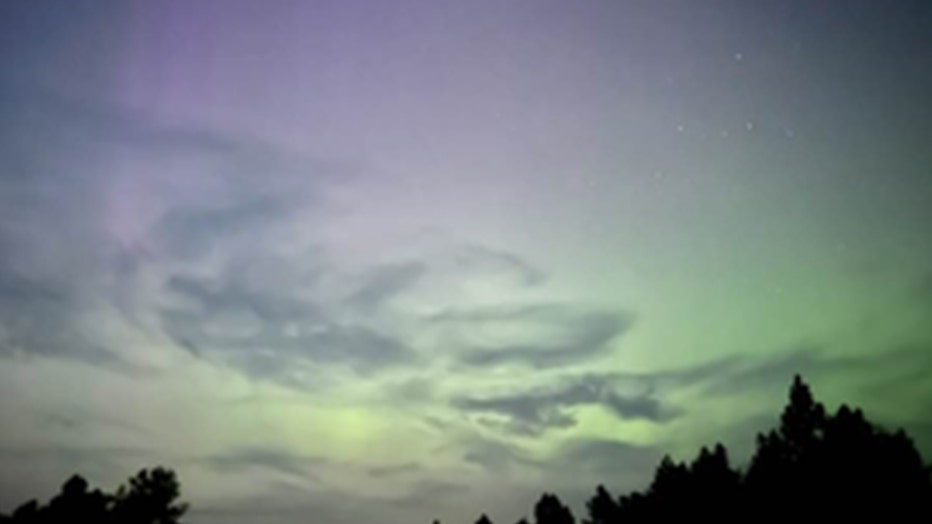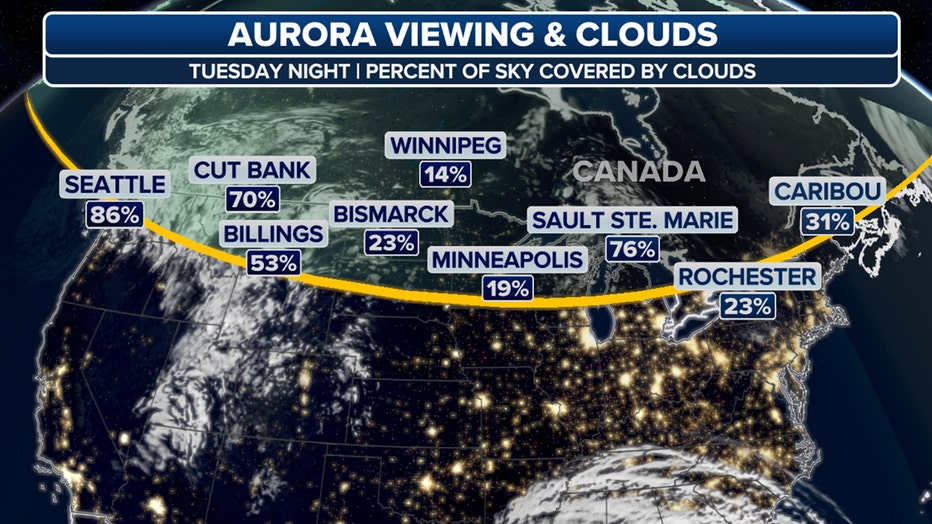Geomagnetic storm watch issued, could produce auroras visible in US
Energized particles sent blasting from the Sun over the weekend are forecast to arrive within Earth’s atmosphere by Tuesday, bringing with them the potential to see the Northern Lights.
NOAA’s Space Weather Prediction Center issued a Geomagnetic Storm Watch for Tuesday after a coronal mass ejection (CME) happened early Sunday. Space weather forecasters say the CME influences should arrive by midday Tuesday and will likely cause moderate geomagnetic storming effects. These impacts could linger into Wednesday, likely dropping to minor geomagnetic storm levels.
When a barrage of electrons smashes into Earth following a solar event like a coronal mass ejection, these electrons interact with particles in Earth’s magnetic field, creating vivid displays known as the Aurora Borealis, also known as the Northern Lights. While auroras are best seen in the polar regions, including Alaska and northern Canada, stronger solar events can produce Northern Lights farther south.

Northern Lights seen on Aug. 11, 2024, from Athol, Idaho (Credit: Denise Viana)
SUN LIKELY REACHES HIGHEST SUNSPOT COUNT IN 20 YEARS
Because of Tuesday’s solar storm, space weather forecasters say the Northern Lights could be visible in the northern U.S. from New York to Idaho. Those along the U.S.-Canadian border will likely have the best chance to see the lights on Tuesday night.
How to view the Northern lights
What light show people in these lucky parts of the country see on Tuesday night into Wednesday all depends on cloud cover, moonlight and the timing of the solar storm.

Northern Lights cloud cover forecast for Tuesday night. (Credit: FOX Weather)
THE HISTORY OF EARTH'S GREATEST SOLAR STORMS
According to the FOX Forecast Center, there is partial cloud cover across most of the northern Tier, but cities including Minneapolis in Minnesota and Bismarck in North Dakota may have fewer clouds to obscure the view.
Moving away from city lights will also help skywatchers see those natural neon dancing lights in the sky. A waxing crescent Moon will be about 40% full, helping to reduce some light after dark.
There are more chances ahead to see space weather's beautiful but powerful impacts as the Sun approaches the Solar Maximum in an 11-year cycle.
Find more updates on this story at FOXWeather.com.


